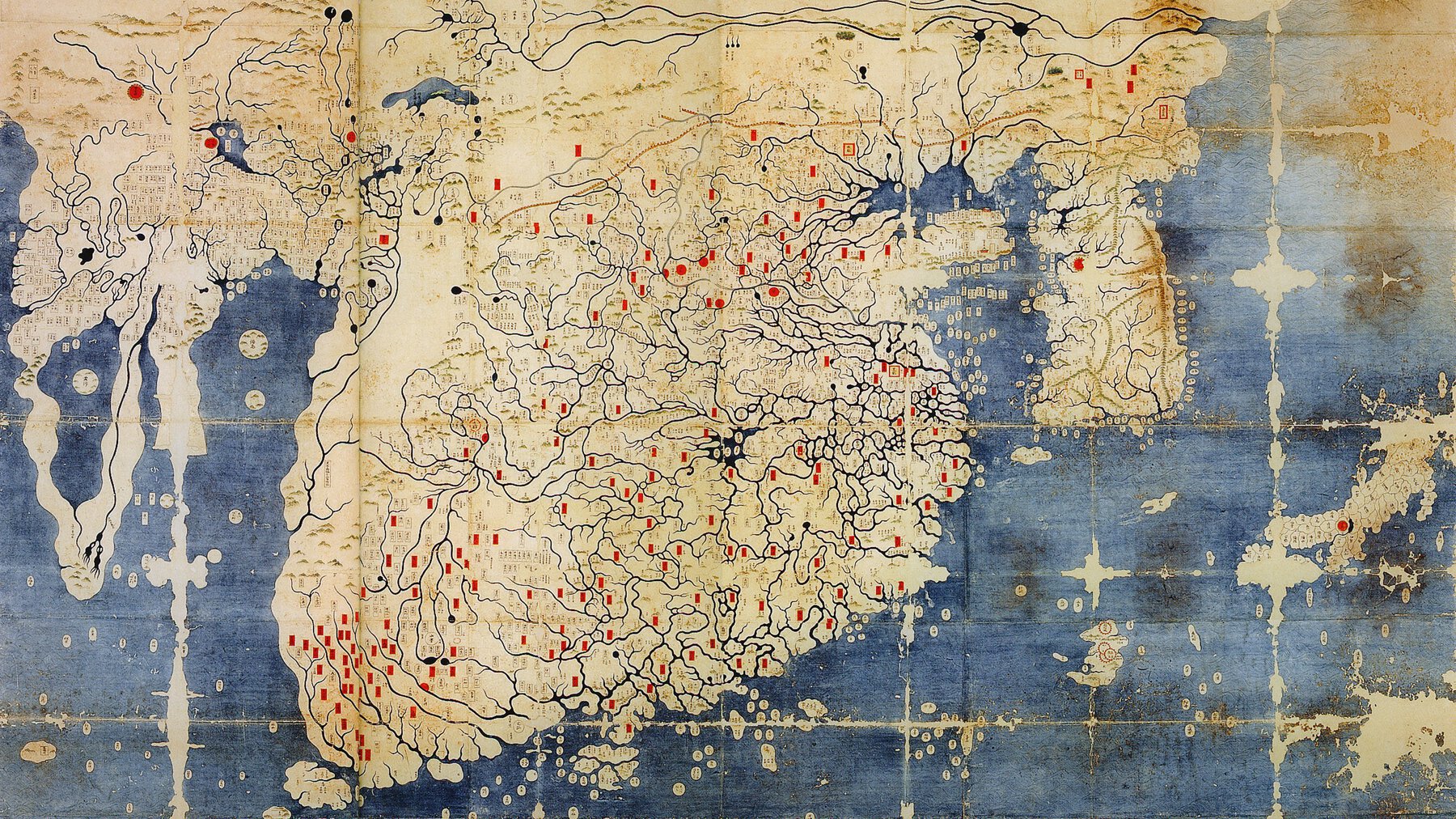Transimperial Networks and East Asia: Timeline
Production Details
Timeline Creators: Menglu Gao, Sophia Hsu, Waiyee Loh, Hyungji Park, Jessica R. Valdez, Adrian S. Wisnicki (tech. dev.), Rae X. Yan
Cluster Developer: Sophia Hsu Contact
Lesson Plan Cluster Title: Transimperial Networks and East Asia
Publication Date: 2022
Overview and Timeline
To help instructors and students who may be unfamiliar with the history of East Asia and its transimperial exchanges with the Anglophone world, the creators of the “Transimperial Networks and East Asia” lesson plan cluster built this timeline, which includes some major historical events from the fifteenth to the twentieth century. This timeline comes out of our many discussions about the methodological issues that arise when the field of Victorian Studies seeks to expand its traditional geographical scope. As we quickly realized in the process of creating our cluster, the usual boundaries of the long nineteenth century (the French Revolution to World War I) are too limited and Eurocentric for the transimperial connections our lesson plans examine. Thus, we offer this timeline both to orient instructors and students and to illustrate how centering East Asia calls into question our field’s most basic assumptions. For more historical context and resources, please peruse each lesson plan.
Note for users with visual impairments: The timeline below presents items along a vertical axis, with events being given in a descending, alternating right-left fashion (desktop) or one below another (mobile).
Centuries: 1400s 1500s 1600s 1700s 1800s 1900s
1402
The Korean world map, the Kangnido, is completed
1594
First appearance of Korea in a Western world map
1600
East India Company (EIC) incorporated
1664
EIC starts to import tea from China
1773
EIC begins its involvement in the opium trade
1773
Boston Tea Party
1783
American Independence
1792–94
George Macartney’s failed mission to China to extend trade and diplomatic relations between Britain and China
4 September 1839–29 August 1842
First Opium War
29 August 1842
Britain and China sign the Treaty of Nanking
26 June 1843
China cedes Hong Kong Island to Britain
17 November 1843
Opening of Shanghai and other treaty ports in China
1850–64
Taiping Rebellion in China
1853
Commodore Perry arrives in Japan
1854
Japan and the US sign the Treaty of Kanagawa
1856–60
Second Opium War
29 July 1858
Japan and the US sign the Harris Treaty
26 August 1858
Japan and Britain sign the Elgin Treaty
1859
Opening of Yokohama and other treaty ports in Japan
1868
Meiji Restoration in Japan
26 February 1876
Korea and Japan sign the Treaty of Kanghwa, resulting in the opening of Busan, Incheon, and Wonsan in Korea
6 May 1882–1943
US Chinese Exclusion Act
1894
Britain and Japan revise unequal treaties
25 July 1894–17 April 1895
First Sino-Japanese War
17 April 1895
China cedes Taiwan to Japan
8 October 1895
Assassination of Korean Queen Min
1898
100 Days' Reform in China
1899
End of the treaty port system in Japan
1900
Boxer Uprising in China
8 February 1904–5 September 1905
Russo-Japanese War
17 November 1905
Korea becomes a protectorate of Japan
1910
Japanese annexation of Korea
10 October 1911–12 February 1912
Chinese Revolution
1 January 1912
Establishment of the Republic of China
1914–18
First World War
1916
Warlord Era begins in China
1 March 1919
March First Movement in Korea
4 May 1919
May Fourth Movement in China
1927
Chinese Civil War begins
1929–33
Great Depression
18 September 1931
Manchurian Incident, which led to the Japanese occupation of Manchuria
1932
Formation of Manchukuo
7 July 1937
Marco Polo Bridge Incident
7 July 1937–2 September 1945
Second Sino-Japanese War
1939–45
Second World War
1941
Japan attacks Pearl Harbor and invades Southeast Asia
15 February 1942
British forces surrender to Japan in Singapore, leading to the Japanese occupation of Southeast Asia
2 September 1945
Surrender of Japan and the end of the Japanese Empire
1949
Chinese Communist Party establishes the People's Republic of China
Note: Users interested in seeing an animated, horizontally-oriented version of our timeline may wish to consult the version we created through Knightlab's TimelineJS. However, users should also note that the Knightlab timeline is on an external site and is not coded for visual accessibility.
Header Image Caption
Kim Sahyung, et al. Kangnido. 1402. Wikimedia Commons, Dschingis Khan und seine Erben (exhibition catalogue), München 2005, p. 336–37.
Page Citation (MLA)
Sophia Hsu, Menglu Gao, Waiyee Loh, Hyungji Park, Jessica R. Valdez, Adrian S. Wisnicki, and Rae X. Yan. “Transimperial Networks and East Asia: Timeline” Undisciplining the Victorian Classroom, 2022, https://undiscipliningvc.org/html/lesson_plans/east_asia_timeline.html.
